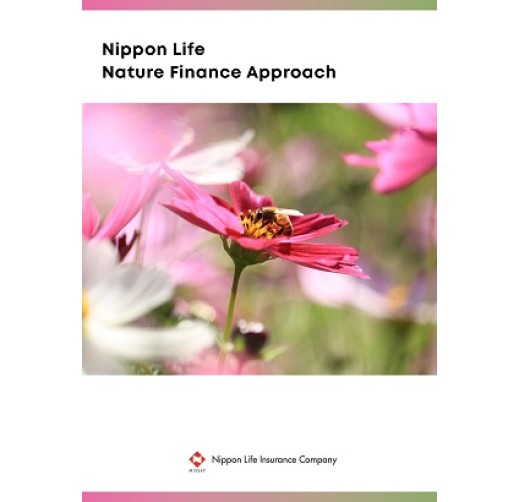Nippon Life Nature Finance Approach
Technology / Service Summary
The “Nippon Life Nature Finance Approach” proposes a methodology to quantitatively measure and evaluate various corporate activities with practical and simple indicators for nature restoration, adopting the “Planetary Boundaries” as its fundamental concept. In the Approach we propose the following indicators.
①NPP (Net Primary Production)
Measuring the amount of energy that biological species use for their survival and growth (NPP) to assess the impact on ecosystems.
②HANPP (Human Appropriation of global terrestrial NPP)
Measuring the amount of NPP used by humans (HANPP) to assess the impact on ecosystems.
③Population of Target Species
Measuring the population to assess the impact of projects on biodiversity.
It adopts the “DNSH” principle and covers land as a first step.
Purpose
The loss of nature and biodiversity is becoming more severe every moment, making it urgent to mobilize finance and accelerate efforts toward nature restoration. To that end, we seek to provide a foundation for visualizing the relationship between corporate activities and nature restoration, and to initiate new investment and financing activities. The Approach is just one of the concepts to visualize the direction and impact of efforts toward nature restoration. Furthermore, by publishing the Approach as “version 1.0,” we hope to stimulate active discussions across policy, business, finance and academia, and contribute to the development of widely accepted nature finance in the international community.
Feature
The Approach sets the maintenance of nature within the boundaries of the "Planetary Boundaries," as its ultimate goal and positions investments and financing that contribute to this as "Nature Finance." In developing the Approach, we focused on “ensuring quantitative measurement of the contribution of a given financing activity to global goals” and “ensuring the indicator should be as simple as possible (such as NPP) while maintaining scientific validity and legitimacy to enable companies and financial institutions to take concrete action,” In particular, by incorporating the concept of reducing HANPP (the amount of NPP used by humans), the Approach can cover a wide range of corporate initiatives across various sectors. If a project results in even a small decrease in HANPP, or a small increase in both NPP and species populations, it will qualify as nature finance under the Approach, thereby supporting companies’ efforts toward nature positive.
Additionally, adopting the DNSH (Do No Significant Harm) principle, the Approach also covers risks from both environmental and social perspectives.
Effect
By introducing the Approach, companies would find it easier to quantitatively understand their contributions to nature restoration, which would promote business transformation, development of new businesses, and consideration of internal resource allocation. We expect this to expand activities that contribute to nature restoration. With the Approach, enhanced engagement between investors/ financial institutions and companies will accelerate the flow of funds toward nature restoration. Furthermore, using NPP and HANPP enables companies to disclosure information in a simple and meaningful way to demonstrate their contributions to international goals.
Controlled Substance
Applicable Regions / Countries
- Japan
- Southeast Asia
- Central/South Asia
- China/ East Asia
- Middle East
- Africa
- Oceania
- North America
- Europe
- Central/South America
- ASEAN countries
Indonesia,Cambodia,Singapore,Thailand,Philippines,Brunei Darussalam,Viet Nam,Malaysia,Myanmar,Lao PDR
Reference URL
Related SDGs Goals
- 15. Life on Land



